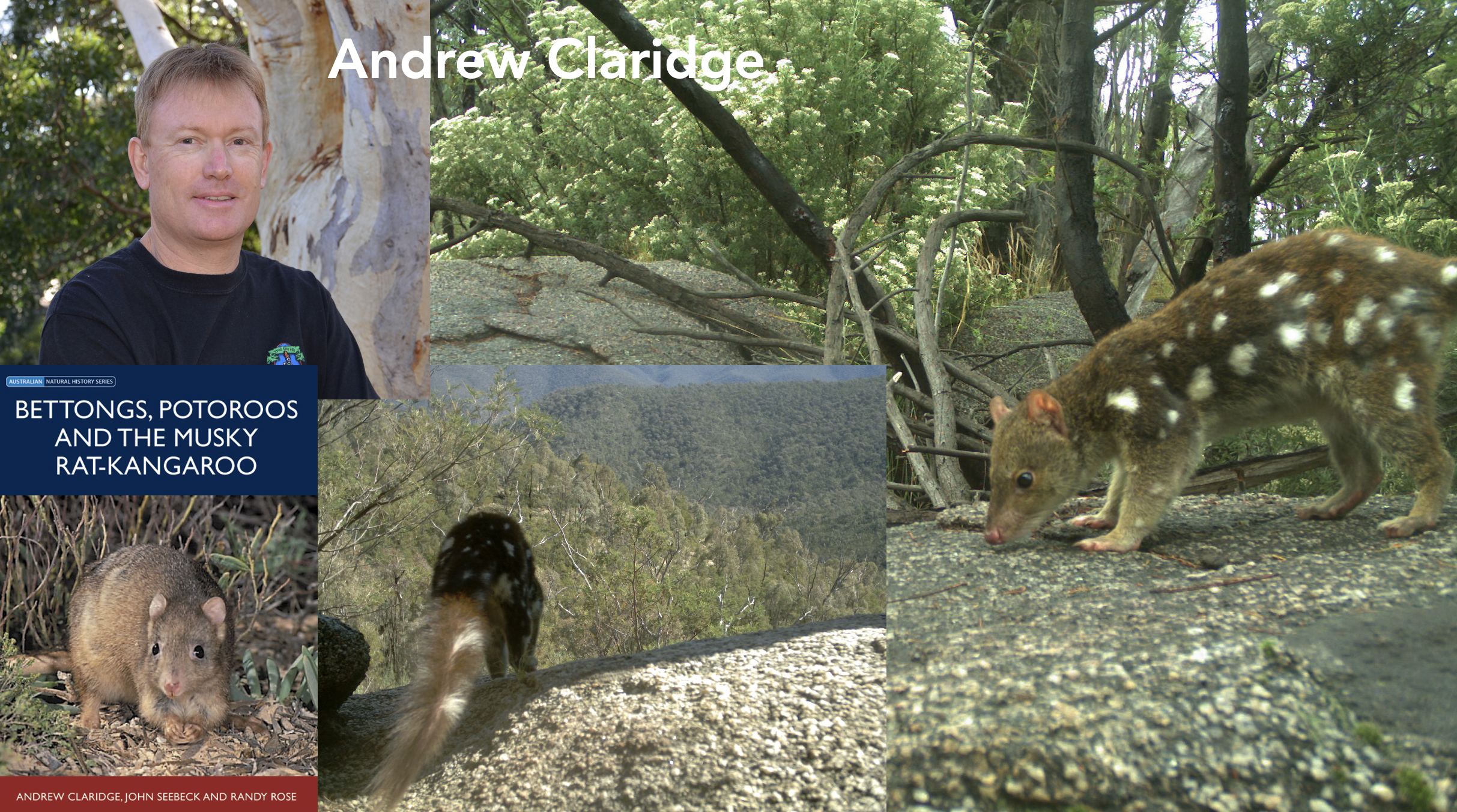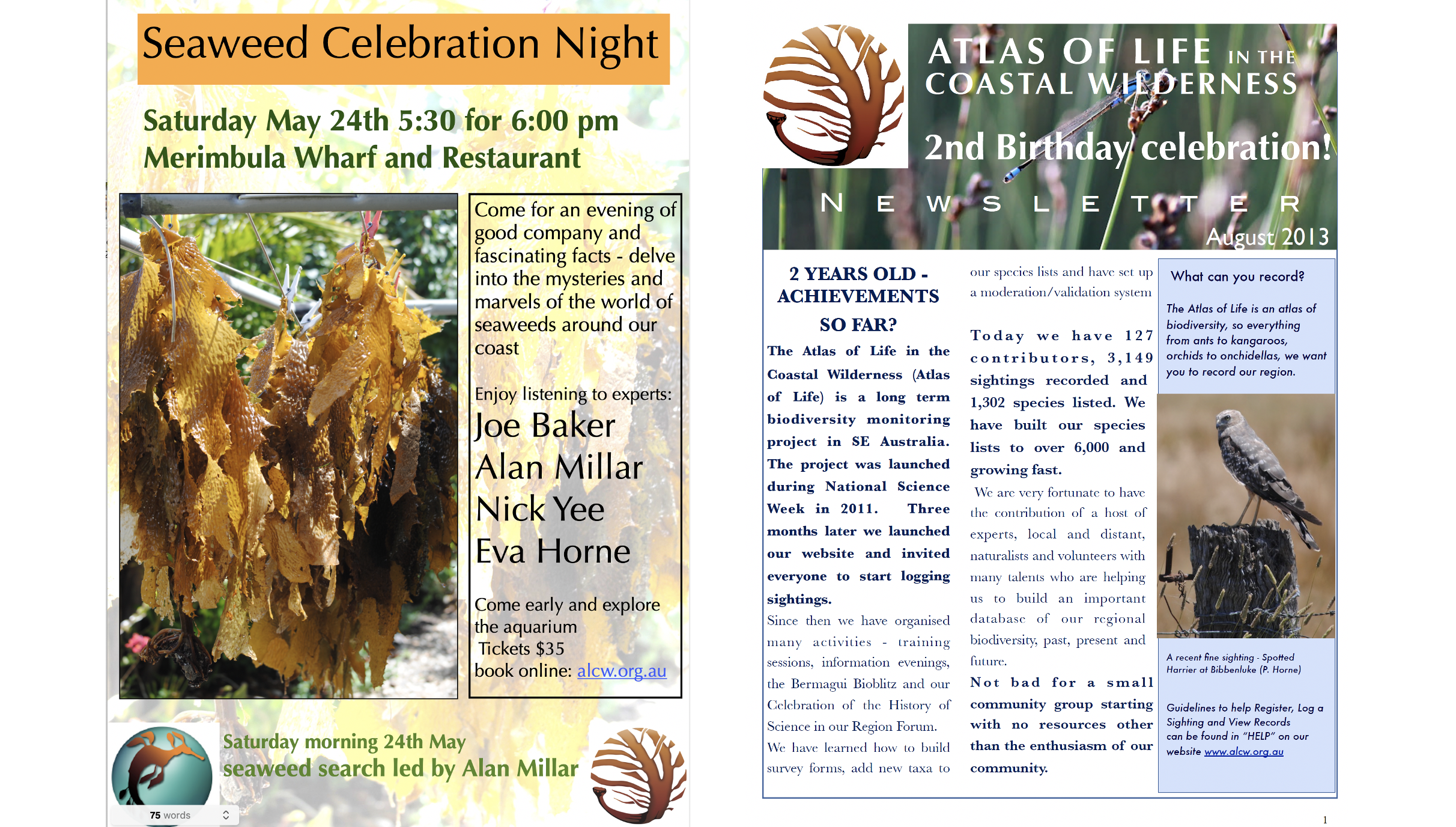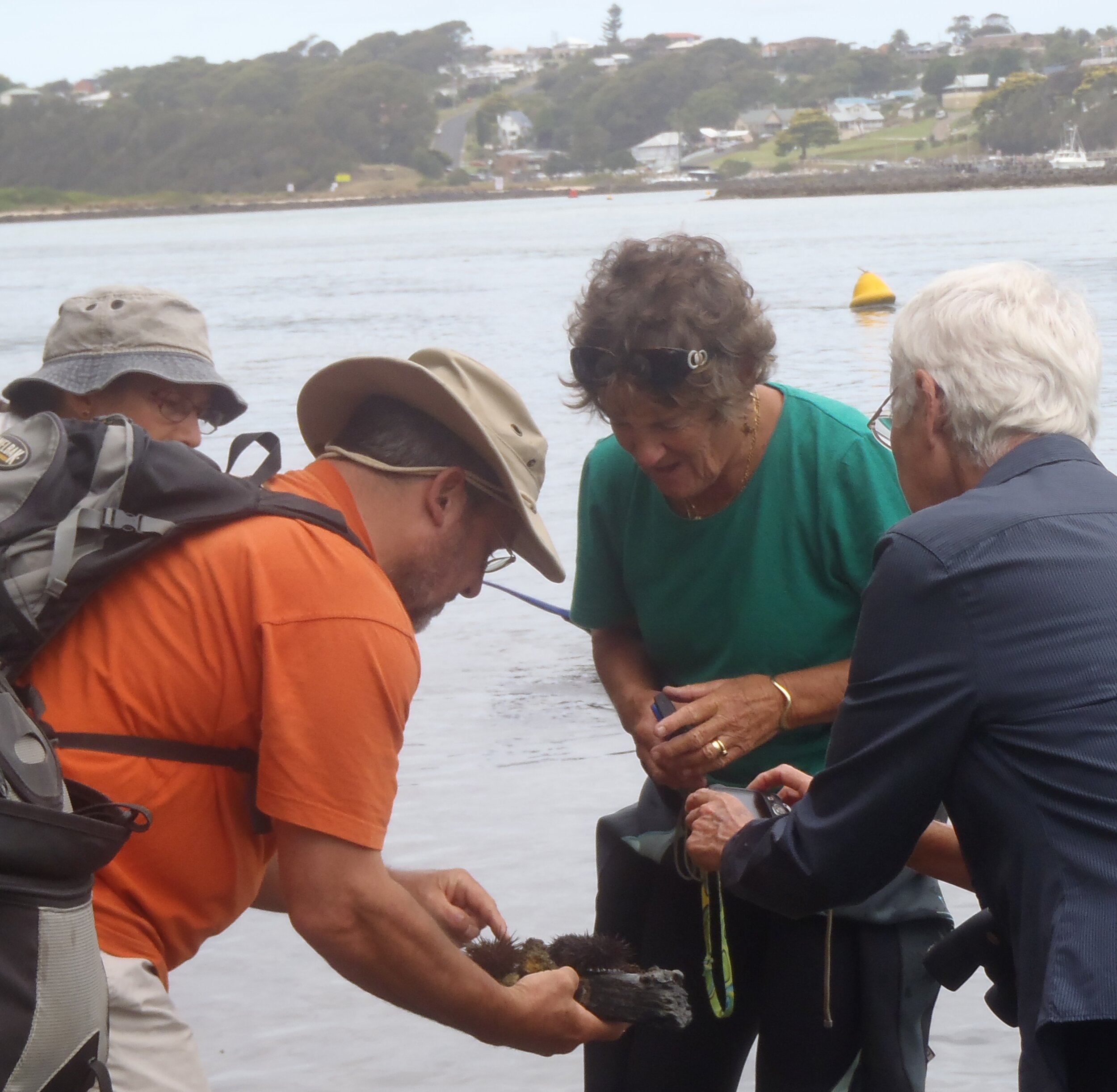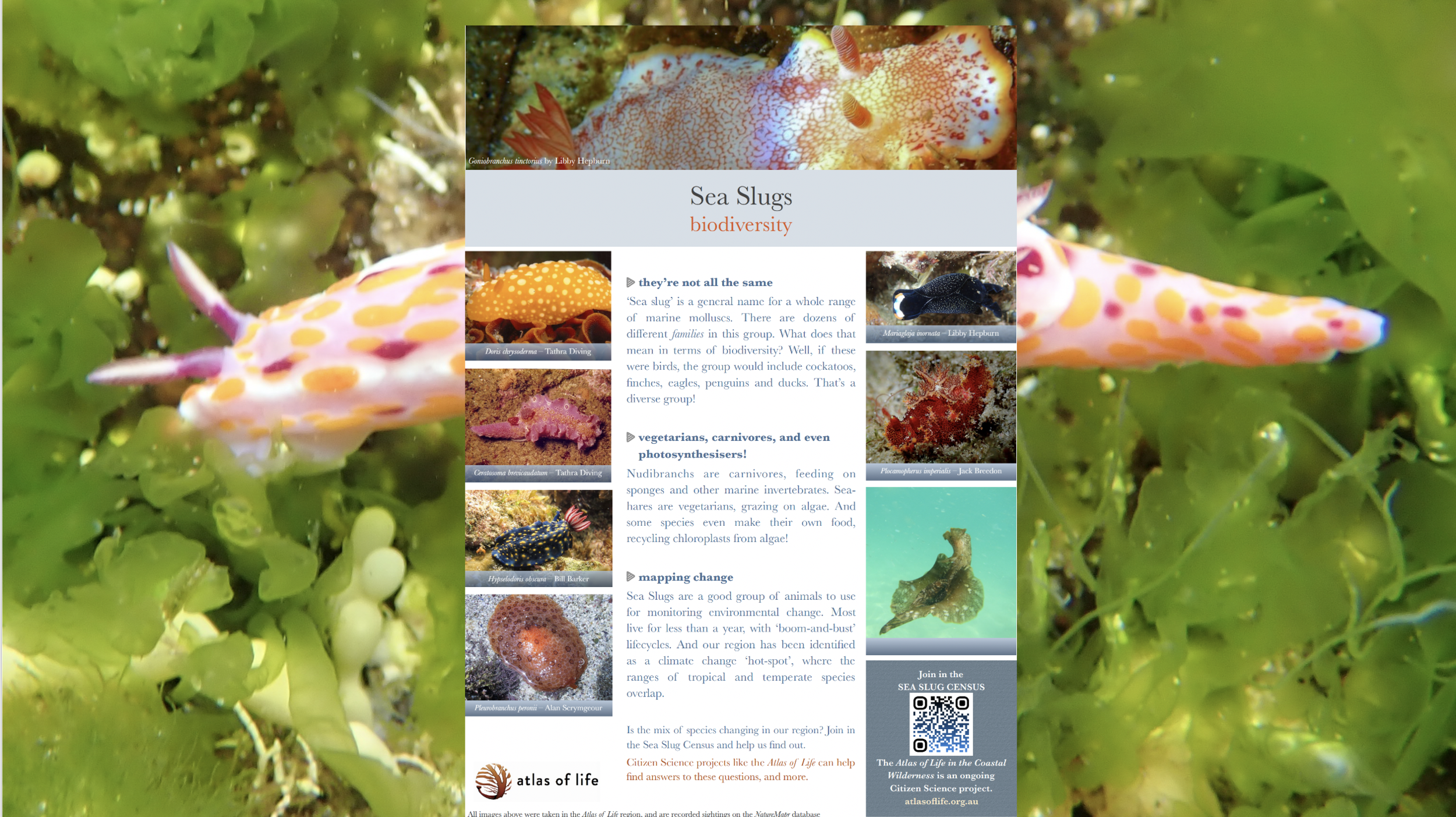The ATLAS of Life in the coastal wilderness - our first 11 years
11 years ago on 19th August 2011, a group of us got together and started the Atlas of Life in the Coastal Wilderness project to work with our community to create the best record of biodiversity in our region.
Now with 66,375 observations of 6,218 species recorded by 1506 observers and supported by our great team of 28 Moderators and the Atlas committees, we feel it’s a good time to celebrate and look back on some of the highlights of our journey so far, so here is a short trip down memory lane……..
The launch of the Atlas of Life by Donald Hobern, first Director of the Atlas of Living Australia, on the right our Inaugural Atlas of Life working group - Graham Greenwood, Brad Barker, Linda Albertson, Rob McKinnon, Melissa Brown, Derek Van Bracht, Libby Hepburn
Our purpose was and is to explore, learn and record - to encourage as many people as we can to spend time in our wornderful nature and enjoy discovering the plants and creatures of our local habitats and with scientists and naturalists, find out more about the place and the species of our landscapes, and record all the species we can. We have done this by organising events in nature and experts to visit and share their passion, we have over the years encouraged many people to help record and expand the database of biodiversity of our region.
Our first events were the Bermagui Bioblitz and the first Atlas of Life Science Forum - A Celebration of the history of science in our region - in 2012
The Bermagui Bioblitz was a great success and much enjoyed by the 240 people who attended. Since then we have run another 7 Bioblitzes in our region and helped people in other places such as the Barrier Reef, Black Mountain in Canberra and Sydney Olympic Park. Our Bioblitzes Bermagui, Panboola, Wallagoot, Mimosa Rocks - where we recorded 1,008 species and one previously unknown to science, Four Winds. Watch this space as our next one will be at the Montreal Goldfields.
Bioblitzes are wonderful because of the Survey Leaders who give all their time and expertise to share with everyone their knowledge of their passion. We are so lucky to have a group of survey leaders , locals and visitors who come back every time and show us new and fasicnating things. As well as the survey leaders the team who host the Basecamps are crucial to the success of these big and complex events, where we have up to 70 surveys over two days. Also the people who organise and make sure things work well. On behalf of everyone, I would like to thank from the bottom of my heart, all the Atlas of Life friends and contributors who have made our first 10 year journey such a meaningful pleasure.
Glenn Cocking is an example of a great survey leader, he allows us to see moths in a way none of us has exoerienced before and after the moth hunts he spends many many hours identifying the moths we have recorded. Glenn is now writing a book on the moths of this area.
We have brought people together by organising events of different sorts, expert speakers and celebrations. We have written Newsletters and shared Creature Features of all sorts. One of our exciting events is our photography competition which has gathered a bouquet of amazing and inspiring images and some amazing and inspiring photographers and judges.
We set up a website where we could share information and stories and news of events coming up. After a number of years, a new member of the Atlas - Kerri-Lee Harris and her partner Paul Whitington, contributed their skills and talents and took the work of the atlas to new levels. As well as adding many new records from the south of our region, Kerri set up a new website and also re-started the Atlas Naturalists group, organising regular field trips and speakers, attracting many new people to our work and enriching our community. We were very sad when the bushfires devastated their place at Wonboyn and they had to take a step back. Their contribution has made a big difference to the legacy of the Atlas.
For 6 years now we have organised events at each year’s National Science Week in August. We have partnered with the Bournda Environmental Edication Centre and established the Sapphire Coast Regional Science Hub. We have worked with many organisations and this year agreed a Memorandum of Understanding so we work more closely with Bega Valley Shire Council. Working across regions and with organisations of all sorts has allowed us to bring more interesting projects and expertise to our community and our networks across our community are our strength. A special partner is Doug Reckord who is the principal of BEEC and a tireless advocate for environmental education and a huge supporter of the Atlas ofLife.
We’ve done lots of things together in the last 10 years and the most important part of the Atlas of Life is the people who come together to enjoy and learn about nature. We have wonderful committee members and moderators and volunteers who help at all our activities and are still with us after a decade. That community of interest is one of our proudest achievements, so a huge thank you to everyone who enjoys and works with the Atlas, Liz, Patricia, Andrew, Paul and Di, Jackie and Max, Glenn, Raymond, Mandi, Doug, Macca, Jenny and Graham, Stuart, Steve, Alan and many, many more….
We have always wanted to be involved in great citizen science projects and there are a number which we have enjoyed and more that we are now just beginning. Using the iNaturalist platform for our biodiversity monitoring, we can now set up our own projects and join in with those started by other people in other areas. contributing to science and expanding our knowledge is an aim of the atlas project and we have made some exciting discoveries along the way, such as the peacock spider found by Helen Ransom in the survey led by Stuart Harris at the Four Winds Bioblitz. Stuart went through the process of confirming the species and named it Maratus Sapphirus for us on the Sapphire Coast. A great honour!
There are so many things we can’t fit into this page, you probably have your own favourite memories of the Atlas and the things we’ve done together. Please write to us and we can add your memories to our facebook page to celebrate our first 10 years together in this wonderful place that we live.
thanks to Richard Green for allowing us to use this magnificent image of Nelson’s Bay















































